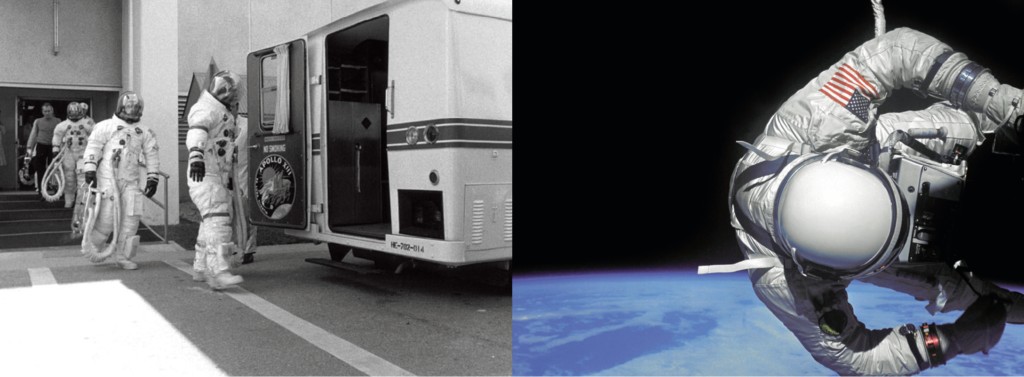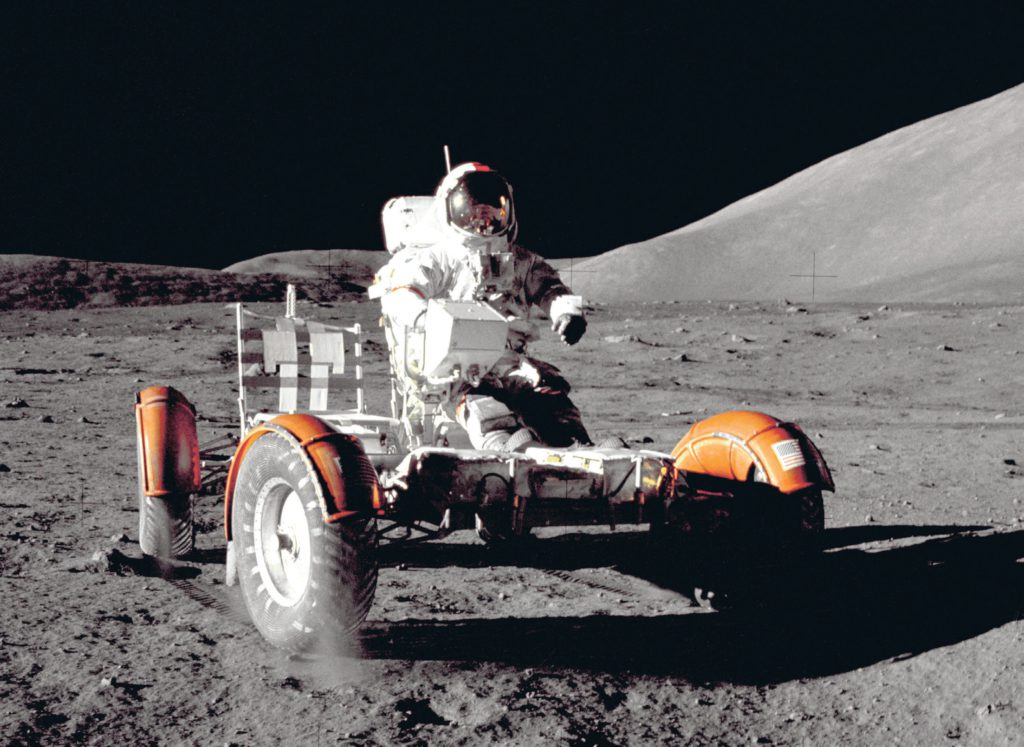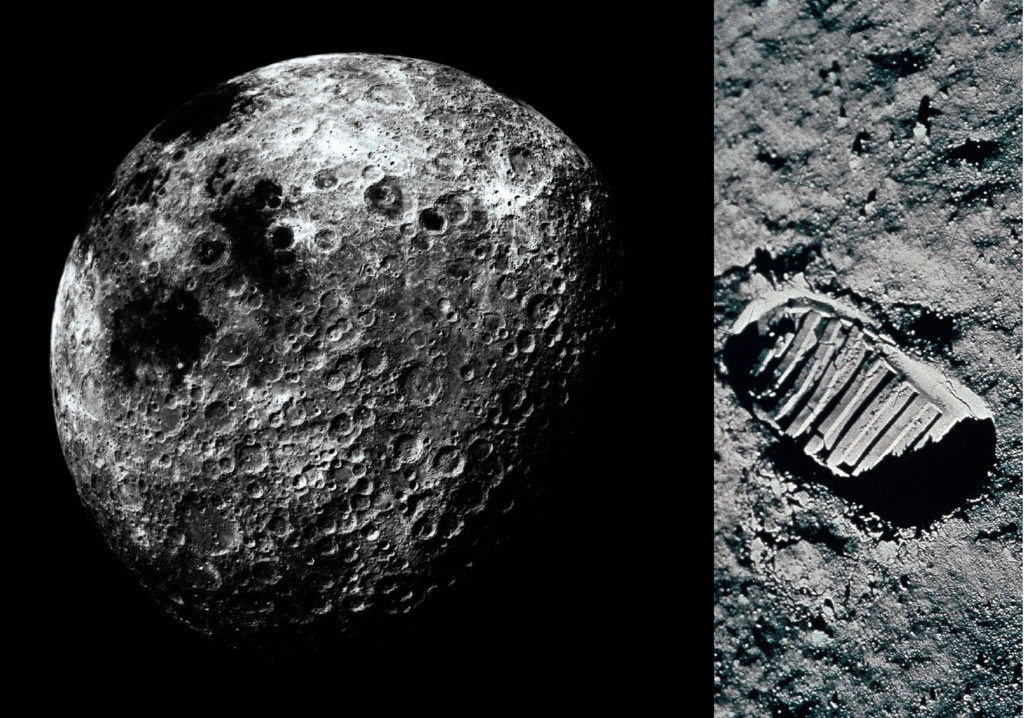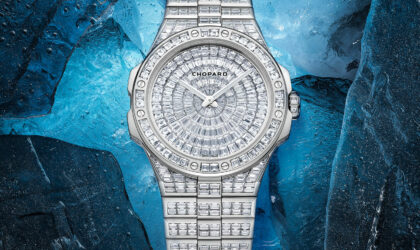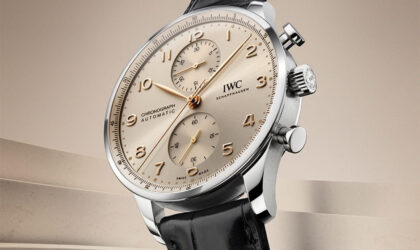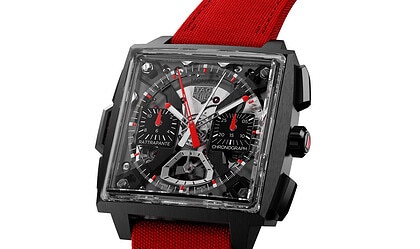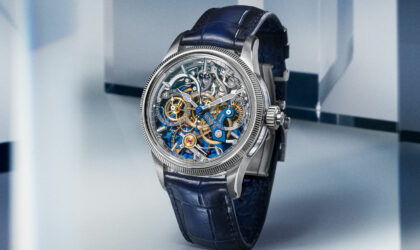Thinking back to that moment in his life, Clooney says, “It was the most exciting time to be a kid. We knew all the astronaut’s names. We even ate the food that the astronauts ate… During one of our vacations, we drove through Neil Armstrong’s hometown, simply because we wanted to drive through his hometown. The astronauts were that big a deal to us.”
In 1961, U.S. President John F. Kennedy set a bold challenge for the American people. He stated, “I believe that this nation should commit itself to achieving the goal, before the decade is out, of landing a man on the moon and returning him safely to the earth.”
According to Clooney, this challenge felt almost impossible at the time, but it did create a new level of optimism that reflected itself in everything that was happening around him.
“In just 60 years, we’d gone from inventing cars to [talking about] landing a man on the moon,” says Clooney, “It felt like the ultimate in optimism, the ultimate in forward thinking. It made us feel like anything could be done.”
When Apollo 11 touched down on the moon on July 20th, 1969, and Kennedy’s challenge was answered, the young Clooney watched from his suburban backyard. Standing with his father, looking up at the moon, he felt a special connection with his heroes as they took their first steps into a new world. Like the astronauts they were straining to see, Clooney’s father also wore an Omega.
In fact, Clooney still has the same watch today. When Clooney Senior heard that his son was working with Omega, he presented him with his old Omega as a gift.
“He brought it down from the attic, after putting it away for 20 years,” says Clooney, “and he wound it and it started running again. It was a special moment. I grew up with that watch on his arm.”
According to Clooney, all the kids knew that the astronauts were wearing Omega watches. He remembers that “Omega was absolutely part of the space program when I was growing up. Omega was about precision time… and it seemed like the space program was a natural progression.”
What Clooney didn’t know then, however, was that the Speedmaster was originally envisioned for a completely different purpose. As the name suggests, it was built for speed, and when first released 60 years ago, it was intended not for rocket ships, but for racing cars.
Upon release, the Speedmaster was an instant hit with professional drivers. Its rugged construction meant that it could withstand intense vibrations and shocks while keeping perfect time. And thanks to the tachymetric scale on its bezel, drivers could time their laps more easily than ever before. It was the first watch with these features, and at the time, revolutionized the design, durability and functionality of wristwatches.
Ultimately, it was these two features that would make the Speedmaster so suitable for space exploration, and would lead to its place on the wrist of every astronaut in the Apollo program from 1965 onwards.
It was in 1964 that NASA began hunting for a chronograph to use on its manned space missions. They chose watches from a number of different brands and put them through the same series of tests that were used for every piece of hardware that was intended for space. Only one watch survived the extreme temperatures, vibrations, hard shocks, and unforgiving vacuums of the testing process – the Omega Speedmaster.
Today, six decades on, the Speedmaster is still qualified for all manned space missions and is a permanent piece of equipment on the International Space Station. In testament to the forward-thinking design of the original, the Moonwatch made now is essentially the same as the one released by Omega in the pre-space age.
For Clooney, this makes the Speedmaster a true classic, like a vintage wine. He explains it like this, “Some things are classic, and when they’re classic, you will always want them. You’d be really upset if they changed. We want modern technology – like our cell phones – but there is something about having certain classic things, that if they changed, it would break your heart.”
On the inside, the calibre is also unmodified and manufacturing the Moonwatch remains a complex exercise, as it has always been. It takes a staggering 14 months to prepare all the separate component parts prior to assembly, and 80 manual operations are needed to assemble the base plate alone. Like when it was first released, the human hand is an essential part of the process.
It is ironic that the Omega Speedmaster has required no modification, considering that the NASA space program can be credited with technical innovations spanning from mobile telecommunications to SMS messaging, and from solar panels to water purification. As Clooney says, the Speedmaster may well be the true definition of a classic: a design that need never be altered.
Further proof of the enduring quality of the Speedmaster’s design can be found closer to home, as a navigational tool for terrestrial explorers. In 1968, Ralph Plaisted used his Speedmaster and sextant to determine the exact location of the geographical North Pole for the first time. Likewise in 1985, explorer Wong How Man used his Speedmaster to help discover and map the elusive source of the mighty Yangtze River.
When asked about the legacy of the Speedmaster and the space program that it was a part of, Clooney responds, “[They are symbols] …of a time that our world was looking forward to challenges. When we thought we could do better, and when we thought that we could reach for the stars and actually get to them. It was without question, us at our finest and our bravest, and the astronauts were in the lead.”
Looking back on that fertile period of discovery and exploration, it is clear that Kennedy’s challenge was essential to the achievements that followed. For Clooney, now is a moment when we need more great challenges to lead us into a new period of optimism and technical progress.
“I don’t worry that it won’t happen again,” he says, “I only hope that next time it’s as productive and exciting as it was then.”
While it is impossible to know which frontier we will cross next, we can be sure, as is Clooney, that we will continue reaching for the stars. And if there is one thing that we can take from the 60th anniversary of the Omega Speedmaster, it is that with the right tools, achieving any challenge is possible.
Omega is proud to have played a role in one of the greatest achievements of the 20th century – the moon landing – and looks forward to the many great accomplishments humans will make in the next 60 years and beyond.
